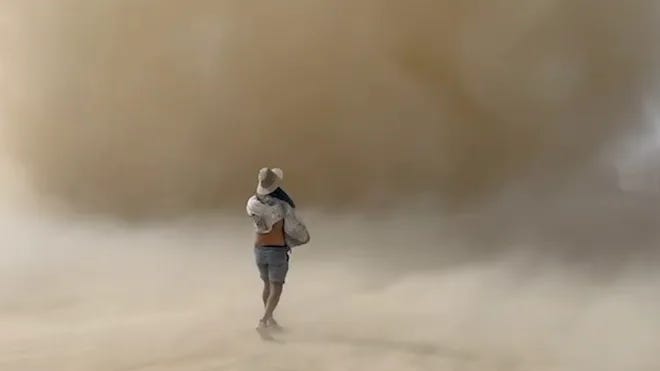The Digital Playa: Pioneering Connection in a Disconnected Space
Building the first mobile network at Burning Man in 2013
Sometimes the most profound innovations happen in the most unlikely places. As CEO of Tropo, I found myself drawn into an extraordinary experiment: helping to create cellular connectivity in a place fundamentally designed to disconnect – Burning Man's Black Rock City, back in 2013.
The Call of the Playa
The Black Rock Desert presents a startling paradox: a vast, forbidding expanse, transformed annually into a vibrant temporary city of 50,000+ people. No running water, no electrical outlets, no infrastructure whatsoever. It's the last place you'd expect to find cellular innovation – and perhaps that's exactly why it called to us.
When the team from Range Networks approached us about their experimental network project, I recognized something special. Here was a chance to push the boundaries of what's possible in telecommunications, to test our technology in extreme conditions, and perhaps most importantly, to learn how connectivity could serve human needs without overwhelming human experience.
Bridging Two Worlds Through Technology
Our role at Tropo wasn't just about providing funding – it was about creating applications that could meaningfully bridge the gap between the playa and the "default world." We developed systems that allowed participants to make brief calls out to the real world and receive callbacks within a limited time window. Each technical decision was guided by a deep respect for the event's principles of immediacy and participation.
The early days brought valuable lessons. Our initial implementation recycled phone numbers too quickly, creating surreal situations where couples thought they were calling each other but reached different people entirely. It was a powerful reminder that in telecommunications, every technical decision has human consequences. We quickly adjusted, retiring numbers for the duration of the event – a small change that made a world of difference in preserving the integrity of these connections.
Learning in the Dust
What fascinated me most was watching how our applications evolved in response to real human needs. Working alongside the Papa Legba camp (named for aWest African and Caribbean Voodoo god who acts as a mediator between the human and spirit worlds), we saw firsthand how people used connectivity in this disconnected space. Most calls stayed within the playa – Burners coordinating meet-ups at art installations or calling for ice deliveries. But occasionally, someone would approach with urgent need to reach the outside world, reminding us why we'd undertaken this experiment in the first place.
The resistance that was encountered was enlightening. As the LA Times reported, longtime Burners saw phones as "one more thing that contaminates the purity of the event." Even Larry Harvey, the festival's founder, initially viewed cellphone use as something to be done only in private. These perspectives shaped how we designed our applications, pushing us to create technology that could serve without intruding.
Beyond the Festival: Lessons in Innovation
What started as an experiment in the desert led to profound insights that would shape Tropo's future direction. The challenges of integrating with Range Networks' experimental setup taught us valuable lessons about running cloud telephony APIs inside carrier networks – knowledge that would later prove crucial in our partnership with with companies like Ericsson, Huawei, Deutsche Telekom, and AT&T.
But perhaps more importantly, it taught us about the delicate balance between innovation and preservation. We learned that sometimes the most powerful technology is the kind that knows when to step back, that enables connection without demanding it.
The Legacy of Digital Dust
Today, mobile phone usage is still discouraged on the Playa but is now more widely available during the event, I reflect on our role in this evolution. We weren't just funding a project or providing applications – we were part of a larger conversation about technology's role in spaces of intentional disconnection.
The network we helped enable wasn't just about making calls; it became a testing ground for ideas that would later help connect remote communities worldwide. As David Burgess noted, the challenges faced at Burning Man informed solutions for everything from power systems in southern Zambia to communication networks in previously unconnected areas.
Looking Forward
As I watch the continued evolution of connectivity at Burning Man (with Starlink’s ‘Direct to Cell’ being launched before the next Burning Man), I'm struck by how our early experiments helped shape not just the technical landscape, but the philosophical one as well. We showed that it's possible to build technology that serves without dominating, that connects without consuming.
In today's world of ubiquitous connectivity, these lessons are more relevant than ever. The art of innovation isn't just about what we build – it's about understanding when to build, how to build, and most importantly, when to let the desert silence speak for itself.
The playa taught us that even in a place dedicated to disconnection, people sometimes need to reach out. The challenge isn't in preventing that reach, but in designing systems that honor both the need for connection and the space of solitude. It's a lesson that extends far beyond Black Rock City's temporary borders, into how we think about technology's role in all our spaces of intentional disconnection.






